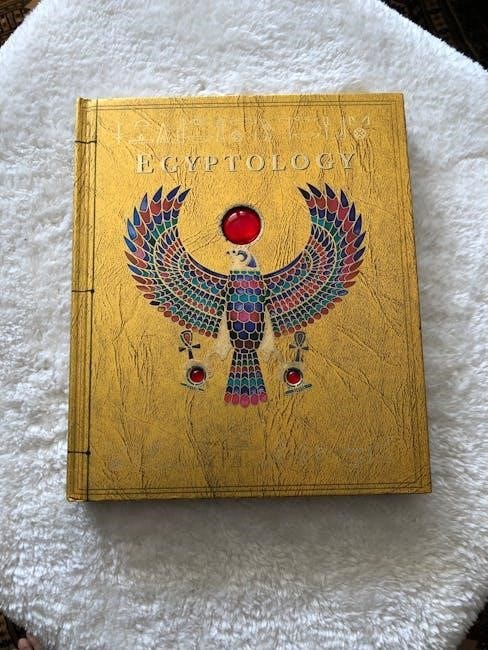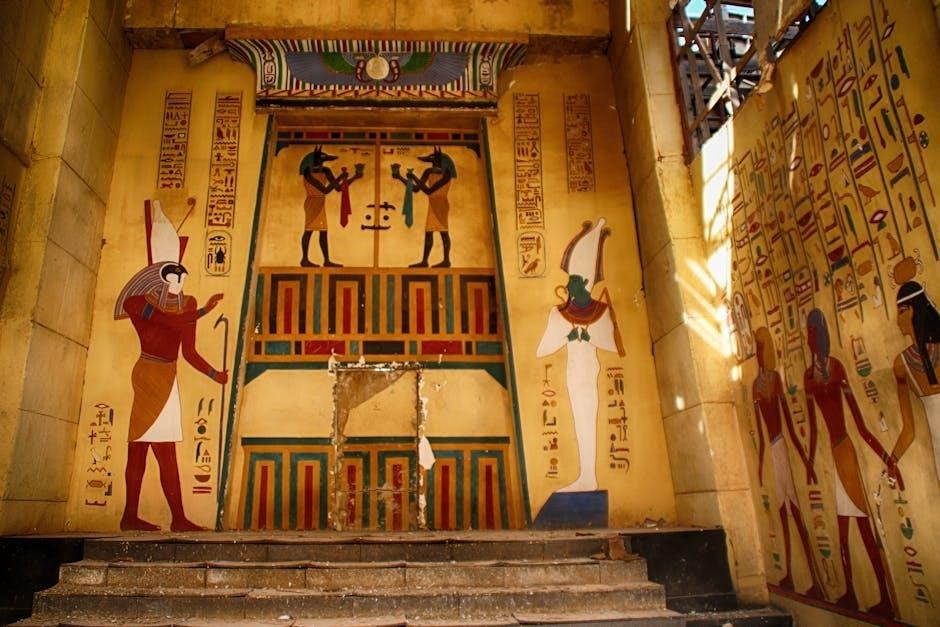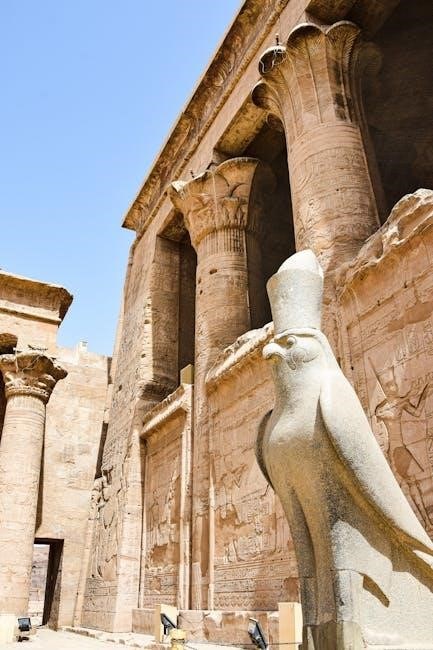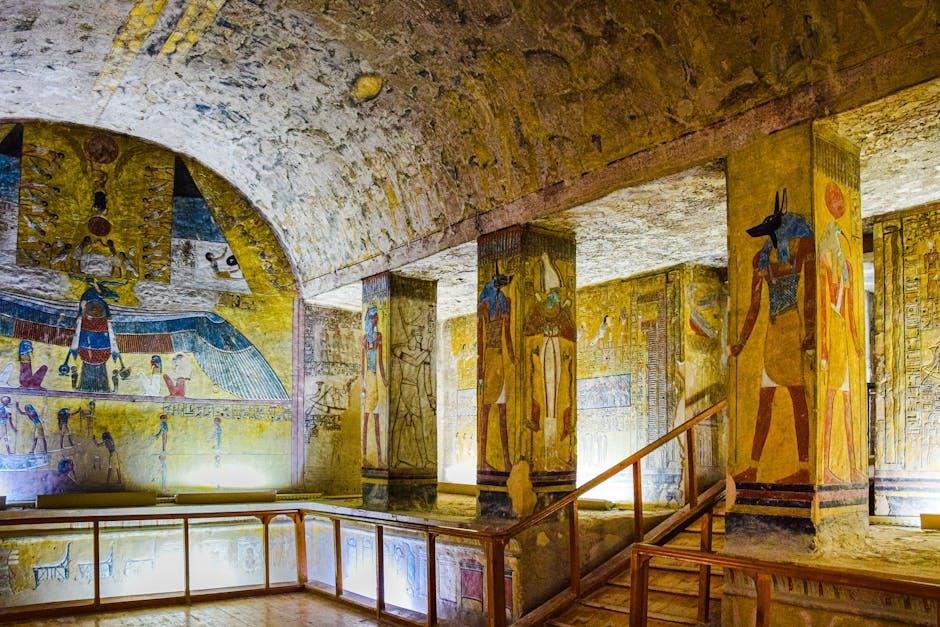The Horus Heresy is a civil war within the Warhammer 40k universe, pitting loyalist and traitor legions against each other. It explores key events like the Siege of Terra and the fall of Primarchs, set in a grim, dark future where humanity teeters on the brink of collapse.
Overview of the Horus Heresy
The Horus Heresy is a pivotal civil war in the Warhammer 40k universe, sparked by the betrayal of the Warmaster Horus against the Emperor of Mankind. Once the most trusted Primarch, Horus was corrupted by Chaos, leading half of the Space Marine Legions to rebel. This conflict reshaped the galaxy, causing unimaginable destruction and setting the stage for the grim darkness of the 41st millennium. The Heresy explores themes of betrayal, loyalty, and the corrupting influence of power, offering a rich narrative that defines the Warhammer 40k setting and its enduring legacy in lore and storytelling.
Historical Context in the Warhammer Universe
The Horus Heresy is a defining event in the Warhammer 40k universe, occurring 10,000 years before the 41st millennium. It began during the Great Crusade, where Horus, the Warmaster of the Space Marine Legions, led humanity to conquest. Corruption by Chaos powers and resentment toward the Emperor’s rule drove Horus to rebellion. This civil war fractured the Imperium of Man, leading to the Emperor’s entombment and the Legions’ scattering. The Heresy’s aftermath shaped the grim darkness of the 41st millennium, leaving humanity fragmented and beset by enemies, both internal and external, forever altering the course of history.
Key Events of the Horus Heresy
The Horus Heresy unfolds through pivotal battles like the Isstvan V Massacre, Drop Site Massacre, and Siege of Terra, shaping the Warhammer 40k universe’s grim future.
The Isstvan V Massacre
The Isstvan V Massacre marked the brutal turning point of the Horus Heresy, where the traitor legions, led by Horus, unleashed devastation upon loyalist forces. The once-brothers clashed in a bloodbath, with the traitors employing devastating virus bombs to annihilate entire Legions. This betrayal shattered the Imperium’s unity and plunged the galaxy into civil war. The massacre symbolized the depths of corruption and the irreversible rift between loyalists and traitors, setting the stage for the Siege of Terra and the eventual Scouring of the Imperium.
The Drop Site Massacre
The Drop Site Massacre was a pivotal event in the Horus Heresy, marking the beginning of open conflict between loyalist and traitor legions. Loyalist forces, primarily from the Raven Guard, Salamanders, and Iron Hands, were lured to the planet Isstvan V under false pretenses. Horus, now fully aligned with Chaos, ordered a surprise ambush, unleashing devastating virus bombs that wiped out nearly the entire loyalist contingent. The betrayal was absolute, and the survivors were left shattered, their legions on the brink of annihilation. This massacre not only signified the irrevocable split within the Imperium but also highlighted the depths of corruption among the once-noble Space Marines.
The Siege of Terra
The Siege of Terra was the climactic final confrontation of the Horus Heresy, as traitor forces, led by the corrupted Warmaster Horus, assaulted the Emperor of Mankind’s stronghold on Terra. Loyalist legions, including the Imperial Fists and their unyielding leader Rogal Dorn, defended the Imperial Palace against relentless traitor legions. The battle was fierce, with both sides suffering heavy losses. The siege culminated in Horus’s ultimate betrayal, breaching the palace but being defeated by the Emperor himself. This pivotal event marked the end of the Heresy, leaving the Imperium scarred and the Space Marine legions fractured, forever shaping the grim darkness of the Warhammer 40k universe.
Major Factions and Characters
The Horus Heresy features two main factions: the Traitor Legions, led by corrupted Primarchs like Horus and Fulgrim, and the Loyalist Legions, defending the Emperor.
The Traitor Legions and Their Leaders
The Traitor Legions, led by powerful Primarchs, played a central role in the Horus Heresy. Legions like the Luna Wolves, later known as the Sons of Horus, were led by the charismatic Horus, who became corrupted by Chaos. Other notable Traitor Legions included the Emperor’s Children under Fulgrim, the World Eaters led by Angron, and the Death Guard commanded by Mortarion; Each leader’s unique personality and motivations shaped their betrayal, with Horus himself becoming the symbol of rebellion against the Emperor. Their actions reshaped the Warhammer 40k universe, leaving lasting scars and chaos in their wake.
The Loyalist Legions and Their Heroes
The Loyalist Legions stood steadfast in their devotion to the Emperor during the Horus Heresy. Legions like the Ultramarines, led by Roboute Guilliman, and the Imperial Fists under Rogal Dorn were instrumental in defending Terra. Heroes such as Sanguinius of the Blood Angels and Lion El’Jonson of the Dark Angels played pivotal roles, their unwavering loyalty countering the Traitor Legions’ betrayal. These leaders and their armies were the Emperor’s last hope, embodying honor and sacrifice. Their bravery and resolve shaped the outcome of the Heresy, ensuring the Imperium’s survival despite immense losses and tragedy.

Themes and Symbolism
Exploring betrayal, loyalty, and the corruption of power, the Horus Heresy symbolizes the Imperium’s struggle against Chaos, highlighting moral ambiguity and the cost of survival in a grim future.
Betrayal and Loyalty
The Horus Heresy is a tale of profound betrayal and unwavering loyalty, centered on the rebellion of Horus against the Emperor of Mankind. Once the most trusted Primarch, Horus’s corruption by Chaos led to a devastating civil war within the Space Marine Legions. While some Legions remained loyal to the Imperium, others turned against their former brothers, fracturing the once-united forces. This conflict explores the depths of betrayal, the resilience of loyalty, and the moral dilemmas faced by characters torn between oaths, ambition, and the lure of power. The Heresy underscores the tragic consequences of divided loyalties in a grim, unforgiving universe.
The Corruption of Power
The Horus Heresy delves into the insidious nature of power and its corrupting influence, as even the most noble figures succumb to ambition and the lure of Chaos. Horus, once the Emperor’s favored son, is swayed by promises of power and control, leading to his downfall. The Ruinous Powers exploit the pride and arrogance of the Primarchs, transforming them into instruments of destruction. This theme highlights the dangers of unchecked power and the moral decay it fosters, serving as a cautionary tale about the fragility of integrity in the face of overwhelming ambition and the promise of dominance.

Legacy in Warhammer Lore
The Horus Heresy reshaped the Warhammer 40k universe, leaving a fractured Imperium and a wounded Emperor. Its aftermath defines the grim darkness of the far future, where humanity struggles to survive amidst endless conflict and corruption.
Impact on the Warhammer 40k Universe
The Horus Heresy profoundly shaped the Warhammer 40k universe, leaving the Imperium of Man fractured and the Emperor a crippled figure. The civil war exposed the vulnerabilities of the Imperium, leading to a grim, dark future where humanity teeters on the edge of collapse. The events of the Heresy, such as the Siege of Terra and the Isstvan V Massacre, became legendary, defining the lore of the Warhammer 40k setting. The Heresy emphasized the dangers of ambition, corruption, and betrayal, creating a universe where mistrust and conflict are constant themes. Its legacy continues to influence the struggles of humanity and the eternal warfare that defines the 41st millennium.
Cultural and Fan Community Influence
The Horus Heresy has deeply resonated with fans, inspiring a vibrant community of enthusiasts. It has sparked countless discussions, fan art, and cosplay, with its themes of betrayal and loyalty captivating audiences. The series has also influenced tabletop gaming and literature, encouraging creative interpretations and expansions within the Warhammer 40k universe. Fans often create their own stories, art, and scenarios based on the Heresy, showcasing its enduring appeal. This cultural impact highlights the series’ ability to transcend traditional storytelling, fostering a sense of shared ownership among its passionate fan base and solidifying its place in pop culture.

How to Read the Horus Heresy Series
Begin with Horus Rising by Dan Abnett, the first book in the series, which introduces key characters and sets the stage for the epic conflict. The series unfolds chronologically, with each novel building on the previous events, offering a cohesive narrative journey through the civil war.
Recommended Reading Order
The Horus Heresy series is best read in chronological order to fully grasp the unfolding drama. Start with Horus Rising by Dan Abnett, which lays the groundwork. Follow with False Gods and Galaxy in Flames to witness the betrayal and its aftermath. The Wolf of Ash and Fire by Graham McNeill provides a unique perspective on the events. For a deeper dive, explore anthologies like Tales of Heresy, which offer diverse viewpoints. Reading in sequence ensures a coherent understanding of the civil war and its impact on the Warhammer 40k universe.
Key Novels and Their Significance
The Horus Heresy series is anchored by seminal works like Horus Rising, which introduces the central conflict, and False Gods, detailing Horus’s fall. Galaxy in Flames concludes the initial trilogy, showcasing the civil war’s escalation. The Wolf of Ash and Fire offers a unique lens through Leman Russ’s perspective. These novels are pivotal, as they explore the moral complexities and betrayals that define the Heresy. Each book deepens the lore, highlighting the tragic consequences of power and ambition. Together, they form the backbone of the series, providing essential insights into the Warhammer 40k universe’s darkest chapter.
The Horus Heresy reshaped the Warhammer 40k universe, leaving a legacy of betrayal, sacrifice, and unending war. Its grim tale underscores the cost of ambition and corruption, forever defining the dark future of humanity.
Final Thoughts on the Horus Heresy
The Horus Heresy stands as a pivotal event in Warhammer lore, exploring themes of betrayal, loyalty, and the corrupting influence of power. It serves as the foundation of the grimdark universe, shaping the eternal conflict between the Imperium and the Forces of Chaos. The civil war between loyalist and traitor legions, led by iconic figures like Roboute Guilliman and Horus, leaves a lasting impact on the setting. Fans and readers are drawn to its rich narrative, moral ambiguity, and the tragic downfall of heroes. The Heresy’s legacy continues to inspire novels, games, and art, cementing its place in pop culture history.
Future of the Horus Heresy in Media
The Horus Heresy continues to expand its reach in media, with upcoming TV adaptations and animated series rumored to bring its epic story to screens. Novels remain central, with new releases like Horus Rising by Dan Abnett gaining popularity. The Heresy’s themes of betrayal and power resonate deeply, inspiring fan art, cosplay, and community-driven projects. Its influence extends to tabletop gaming, with updated rules and scenarios. As Warhammer 40k grows, the Horus Heresy remains a cornerstone, offering rich narratives and moral complexity that captivate audiences worldwide. Its legacy ensures it will remain a cultural touchstone for years to come.

